Did you know?
Solar panels are not equal. Each has its own unique character.
Explore the various technologies available today
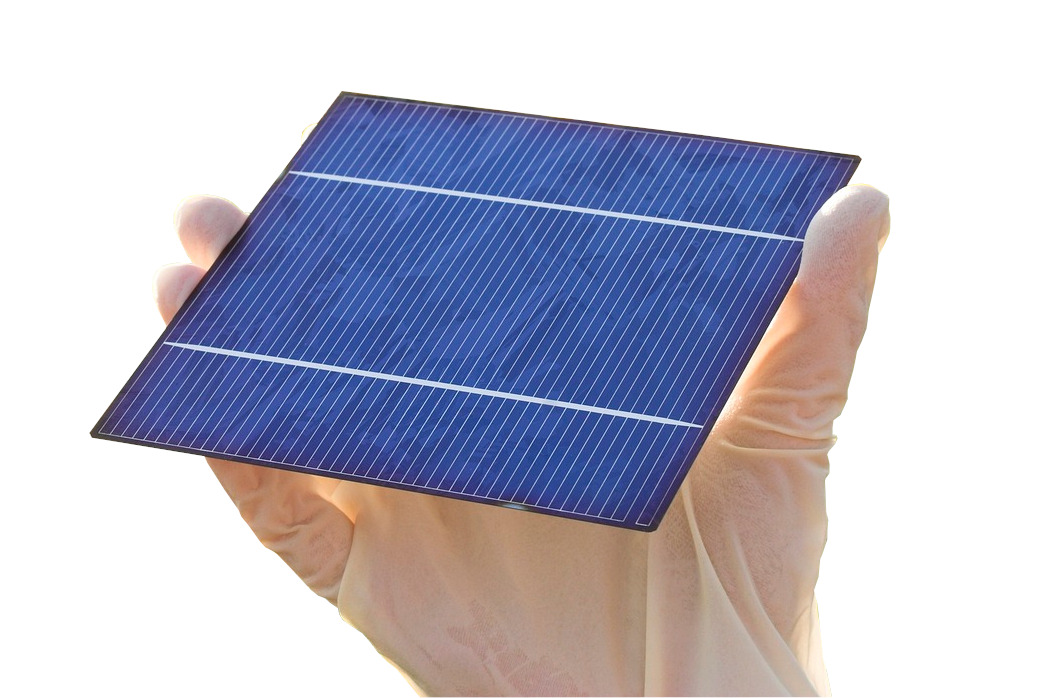
A solar cell, also known as a photovoltaic cell (PV cell), is an electronic device that converts the energy of light directly into electricity by means of the photovoltaic effect. It is a form of photoelectric cell, a device whose electrical characteristics (such as current, voltage, or resistance) vary when it is exposed to light. Individual solar cell devices are often the electrical building blocks of photovoltaic modules, known colloquially as "solar panels". Almost all commercial PV cells consist of crystalline silicon, with a market share of 95%. Cadmium telluride thin-film solar cells account for the remainder.
Photovoltaic cells may operate under sunlight or artificial light. In addition to producing energy, they can be used as a photodetector (for example infrared detectors), detecting light or other electromagnetic radiation near the visible range, or measuring light intensity.
It’s rare to find conventional solar panels on the market today, as technology has advanced to PERC and, more recently, TOPCon technologies.
Photovoltaic cells may operate under sunlight or artificial light. In addition to producing energy, they can be used as a photodetector (for example infrared detectors), detecting light or other electromagnetic radiation near the visible range, or measuring light intensity.
It’s rare to find conventional solar panels on the market today, as technology has advanced to PERC and, more recently, TOPCon technologies.
CONVENTIONAL SOLAR CELL
With the exception of the Tunnel Oxide Passivated Contact (TOPCon) and PERL solar cell architectures,
the “Interdigitated back contact" (IBC) type of silicon wafer-based solar cell structure is the only architecture to achieve or exceed 25% efficiency. There are several advantages of the IBC architecture over the more commonly fabricated front and rear contact design:
the “Interdigitated back contact" (IBC) type of silicon wafer-based solar cell structure is the only architecture to achieve or exceed 25% efficiency. There are several advantages of the IBC architecture over the more commonly fabricated front and rear contact design:
- the elimination of front grid shading, allowing for potentially higher short circuit currents,
- the elimination of front surface doping allows for a wider range of front surface texturing and light trapping schemes to be deployed on the front surface and
- the IBC solar cell is ideal for mechanically stacked tandem cells with higher bandgap technologies such as perovskites.
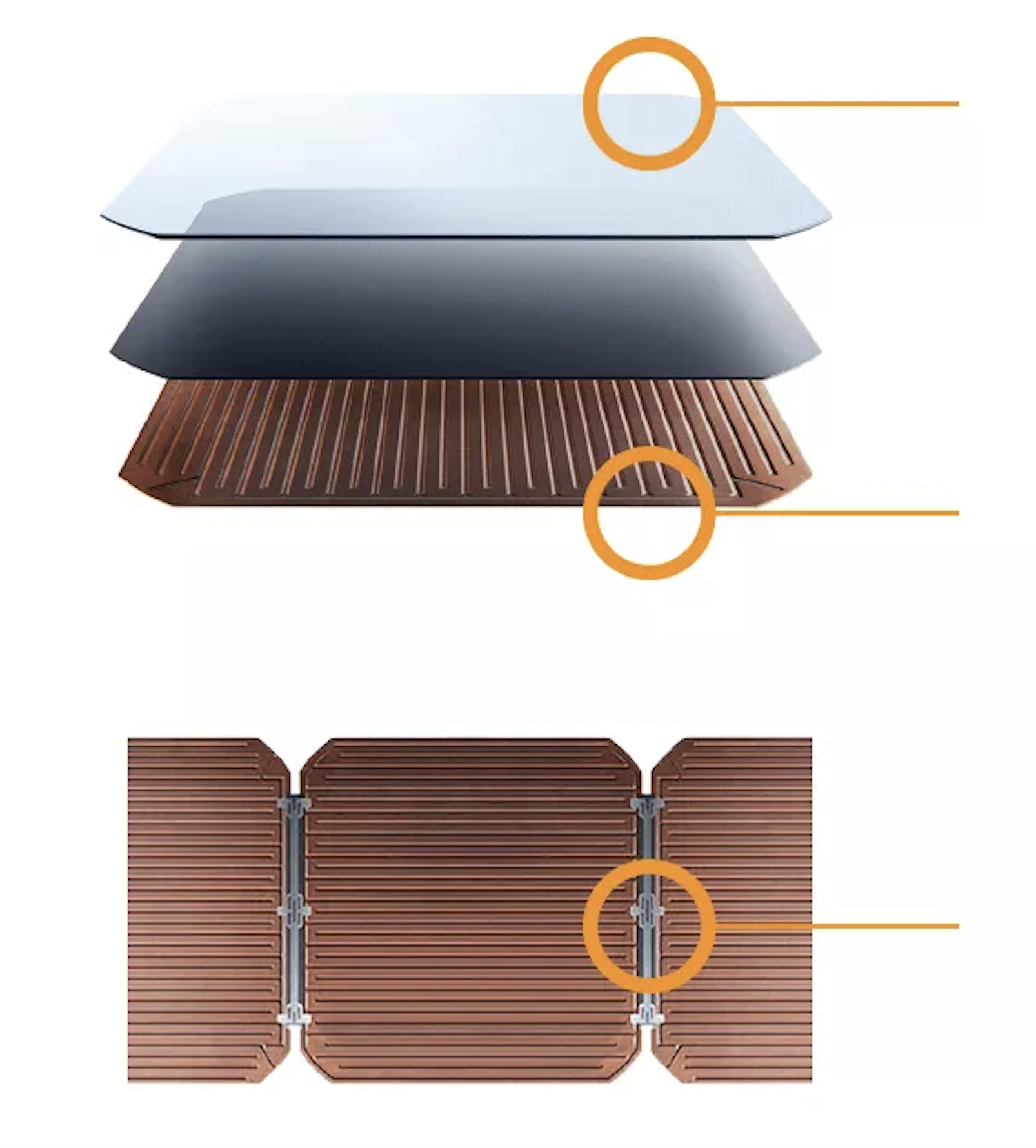
"IBC" SOLAR CELL
Source: https://pv-manufacturing.org/
The main layer for the IBC solar cell is the n-type or p-type c-Si wafer functioning as the absorber layer. This layer is manufactured by doping a c-Si layer with boron or phosphorous, to create a p-type or n-type doped wafer. Then, an anti-reflective and passivation coat usually made out of SiO2 is placed on one or two sides of the solar cell.
The major structural design modification for the IBC solar cells is the inclusion of a diffusion layer, which features interdigitated n-type and p-type layers allowing for the installation of rear side metal contacts.
Finally, every metal contact for the IBC solar cell is placed in the back of the cell, leaving the front of the cell entirely free from shading materials. This also allows for installing contacts in a wider area, causing series resistance for the cells to be lowered.
The major structural design modification for the IBC solar cells is the inclusion of a diffusion layer, which features interdigitated n-type and p-type layers allowing for the installation of rear side metal contacts.
Finally, every metal contact for the IBC solar cell is placed in the back of the cell, leaving the front of the cell entirely free from shading materials. This also allows for installing contacts in a wider area, causing series resistance for the cells to be lowered.

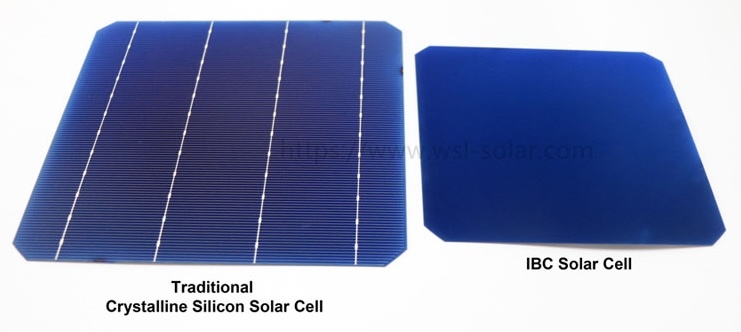
Source: https://solarmagazine.com/
IBC solar cells offer more efficiency energy yield and reliability than other solar panel technologies. The technology is more complicated than other solar cells, but the added value per cell makes it desirable. Instead of front contact energy conversion, IBC has back contact energy conversion. This allows for the entire front of the cell to absorb sunlight, without any shading from the metal ribbons, like those on PERC cells, converting more photons to energy.
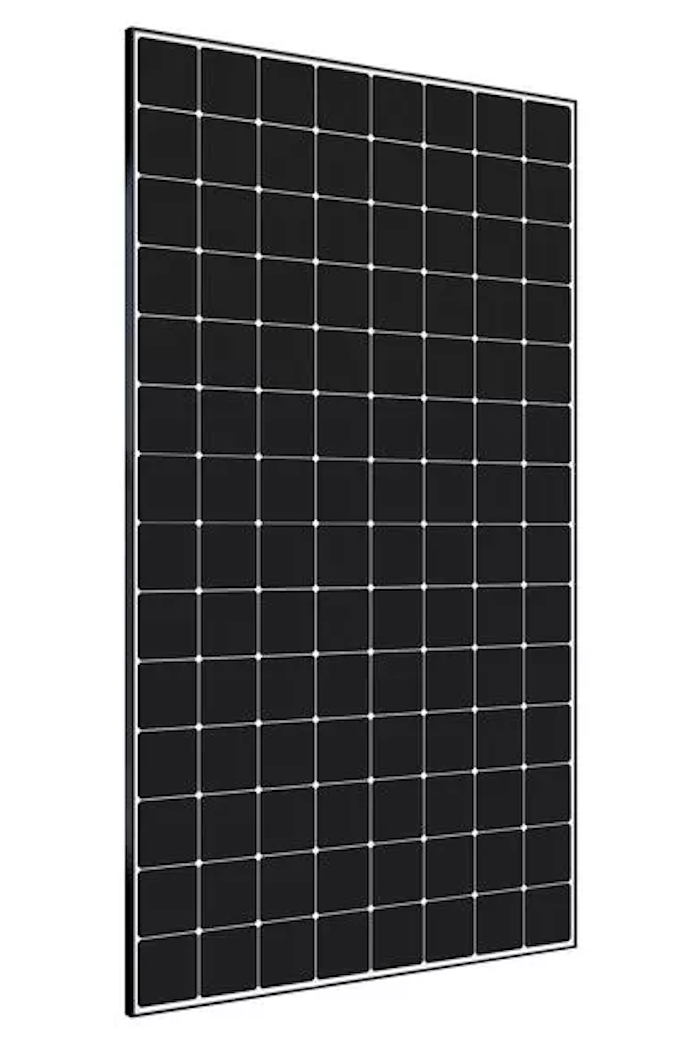
Example: Maxeon 7
Dimensions: 40.7" x 70.3"
Wattage: 435-445 W
Efficiency: 24.1%
Max Annual Degradation: 0.25%
Power Temp Coef: −0.27% / oC
Voltage Temp Coef: −0.236% / oC
Current Temp Coef: 0.058% / oC
Wattage: 435-445 W
Efficiency: 24.1%
Max Annual Degradation: 0.25%
Power Temp Coef: −0.27% / oC
Voltage Temp Coef: −0.236% / oC
Current Temp Coef: 0.058% / oC
Heterojunction solar cells (HJT), variously known as Silicon heterojunctions (SHJ) or Heterojunction with Intrinsic Thin Layer (HIT), are a family of photovoltaic cell technologies based on a heterojunction formed between semiconductors with dissimilar band gaps. They are a hybrid technology, combining aspects of conventional crystalline solar cells with thin-film solar cells.
Heterojunction solar panel improves deficiencies found in standard c-Si modules, reducing surface recombination. This technology holds a higher recorded efficiency and improves the lifespan of the modules. As a result of the improvements, HJT panels have a lower temperature coefficient, resulting in better performance under different extreme temperatures.
Heterojunction solar panel improves deficiencies found in standard c-Si modules, reducing surface recombination. This technology holds a higher recorded efficiency and improves the lifespan of the modules. As a result of the improvements, HJT panels have a lower temperature coefficient, resulting in better performance under different extreme temperatures.

"HJT" SOLAR CELL
Source: https://en.wikipedia.org/
HJT technology was first developed in the early 1990s, but it became popular these last decades, which explains the 5% market share and higher production costs, but this is only a temporary setback that is expected to be surpassed in the near future.
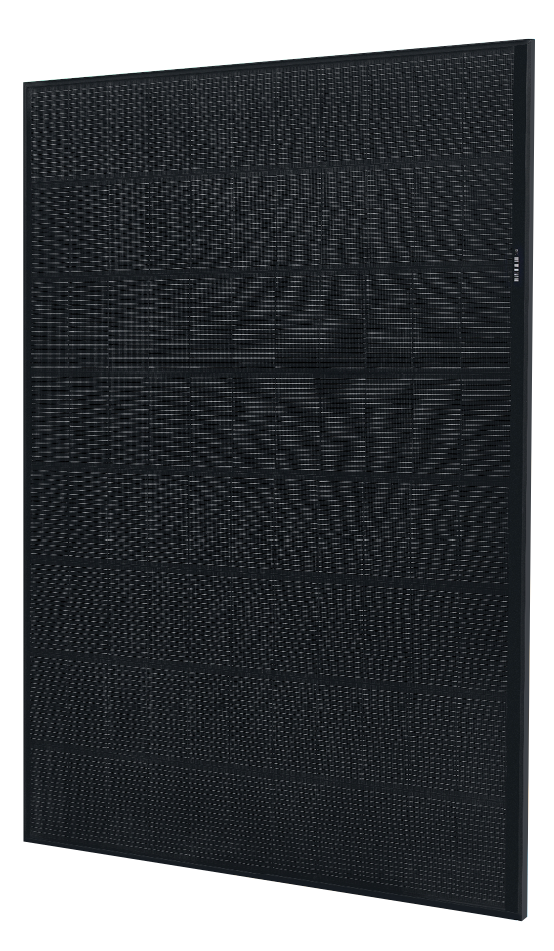
Example: REC Alpha Pure-RX
Wattage: 450-470 W
Dimensions: 47.4" x 68.0"
Efficiency: 22.6%
Max Annual Degradation: 0.25%
Power Temp Coef: −0.24% / K
Voltage Temp Coef: −0.24% / K
Current Temp Coef: 0.04% / K
Dimensions: 47.4" x 68.0"
Efficiency: 22.6%
Max Annual Degradation: 0.25%
Power Temp Coef: −0.24% / K
Voltage Temp Coef: −0.24% / K
Current Temp Coef: 0.04% / K
“Passivated Emitter and Rear Contact” solar cells, known as PERC solar cells, are becoming more common today as an option for making solar panels. PERC solar cells are modified conventional cells that enable the cells to produce 6 to 12 percent more energy than conventional solar panels. PERC solar cells have an extra layer within the back side of the cell. This allows some of the sun’s rays to reflect back into the solar cell, giving them another opportunity to be turned into energy.
"PERC" SOLAR CELL
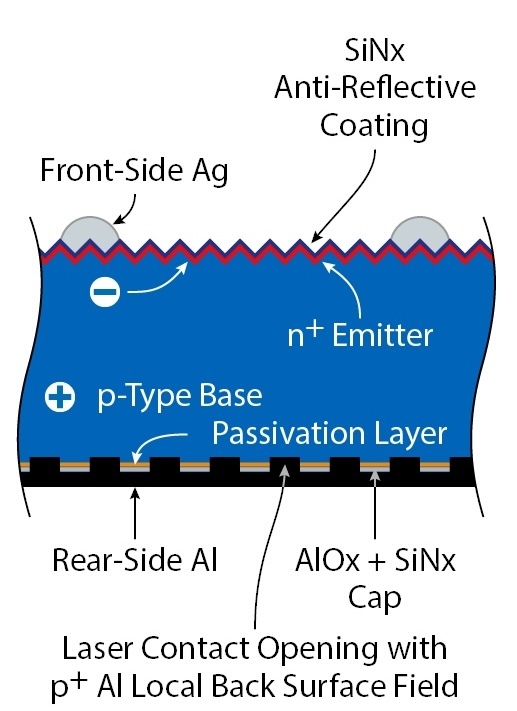
Source: https://us.sunpower.com/
Since PERC solar cells are a modification of conventional cells, they can be manufactured using the same equipment. This makes it easy for manufacturers to change and produce the higher efficient cells. With the higher efficient cells, it will take fewer panels to produce the same amount of electricity when compared to a conventional panel.
However, this modification creates a vulnerability within the technology. Most PERC solar panels have metal strips or ribbons running through them. If these strips crack or disconnect, they are more likely to lose the ability to generate electricity.
However, this modification creates a vulnerability within the technology. Most PERC solar panels have metal strips or ribbons running through them. If these strips crack or disconnect, they are more likely to lose the ability to generate electricity.
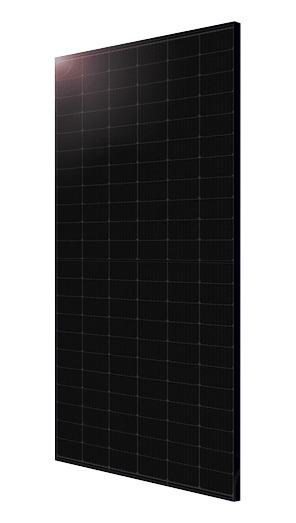
Example: Silfab Sil-410 HC+
Wattage: 410 W
Dimensions: 40.8" x 75.3"
Efficiency: 22.5%
Max Annual Degradation: 0.48%
Power Temp Coef: −0.36% / oC
Voltage Temp Coef: −0.28% / oC
Current Temp Coef: 0.064% / oC
Dimensions: 40.8" x 75.3"
Efficiency: 22.5%
Max Annual Degradation: 0.48%
Power Temp Coef: −0.36% / oC
Voltage Temp Coef: −0.28% / oC
Current Temp Coef: 0.064% / oC
TOPCon, or tunnel oxide passivated contact, was introduced to the industry in 2013 by the Fraunhofer Institute for Solar Energy Systems in Germany and has been used by mainstream Chinese manufacturers since at least 2019. It pairs a tunneling oxide layer with a PERC solar cell to reduce recombination losses and increase cell efficiency.
In a few extra steps, TOPCon makes a PERC cell more powerful and efficient.
The basic idea of the TOPCon concept is that the metal of the connection contacts does not come into contact with the silicon layer. This prevents charge carrier recombination, which typically causes performance losses at the rear of the cell.
In a few extra steps, TOPCon makes a PERC cell more powerful and efficient.
The basic idea of the TOPCon concept is that the metal of the connection contacts does not come into contact with the silicon layer. This prevents charge carrier recombination, which typically causes performance losses at the rear of the cell.

"TOPCon" SOLAR CELL
Source: https://www.solarpowerworldonline.com/
To prevent recombination, a very thin layer of silicon oxide (just a few nanometers) is applied to the surface of the solar cell. This SiO₂ layer passivates the surface, i.e. it blocks the passage of a type of charge carrier. However, the layer is so thin that the current can “tunnel through” quantum mechanically. In addition to this “tunnel layer”, another layer of highly doped silicon is inserted, which improves electrical conductivity and reduces transmission losses.
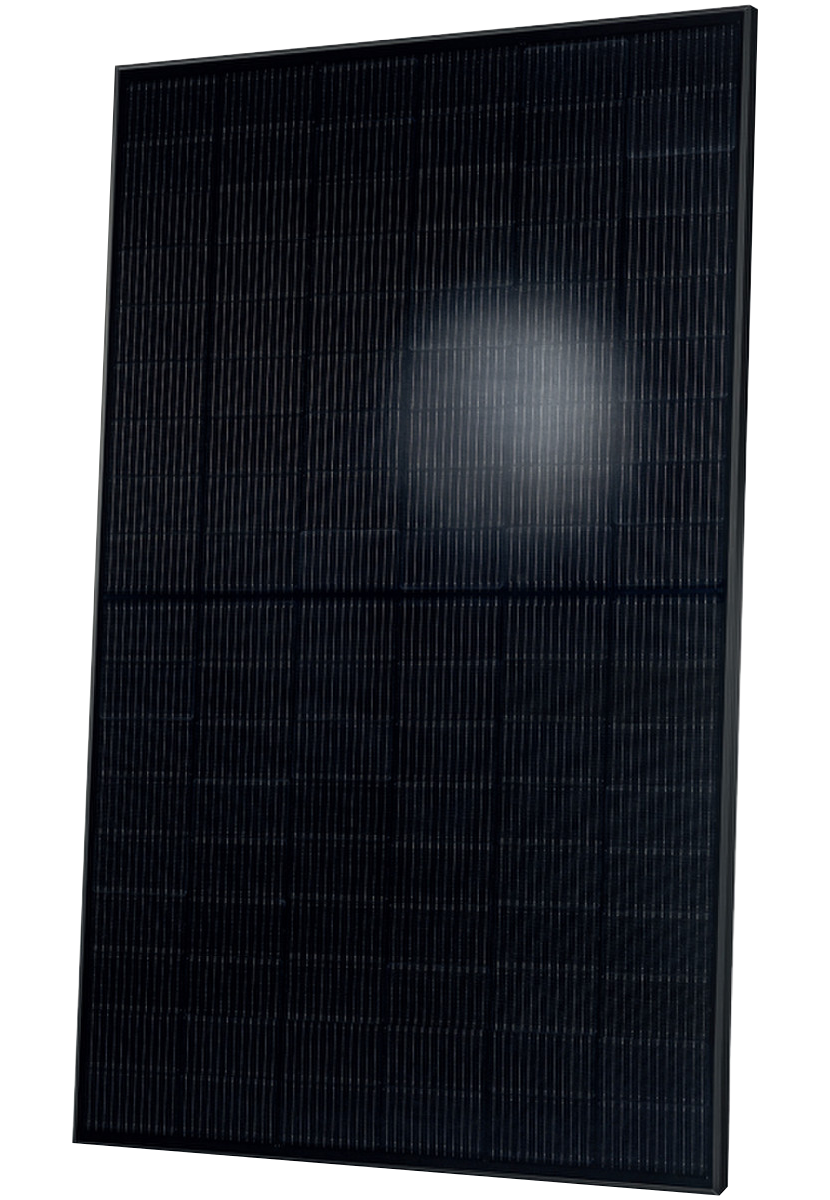
Example: Q.TRON BLK M-G2+
Wattage: 420-440 W
Dimensions: 44.6" x 67.8"
Efficiency: 22.5%
Max Annual Degradation: 0.33%
Power Temp Coef: −0.30% / K
Voltage Temp Coef: −0.24% / K
Current Temp Coef: 0.04% / K
Dimensions: 44.6" x 67.8"
Efficiency: 22.5%
Max Annual Degradation: 0.33%
Power Temp Coef: −0.30% / K
Voltage Temp Coef: −0.24% / K
Current Temp Coef: 0.04% / K
